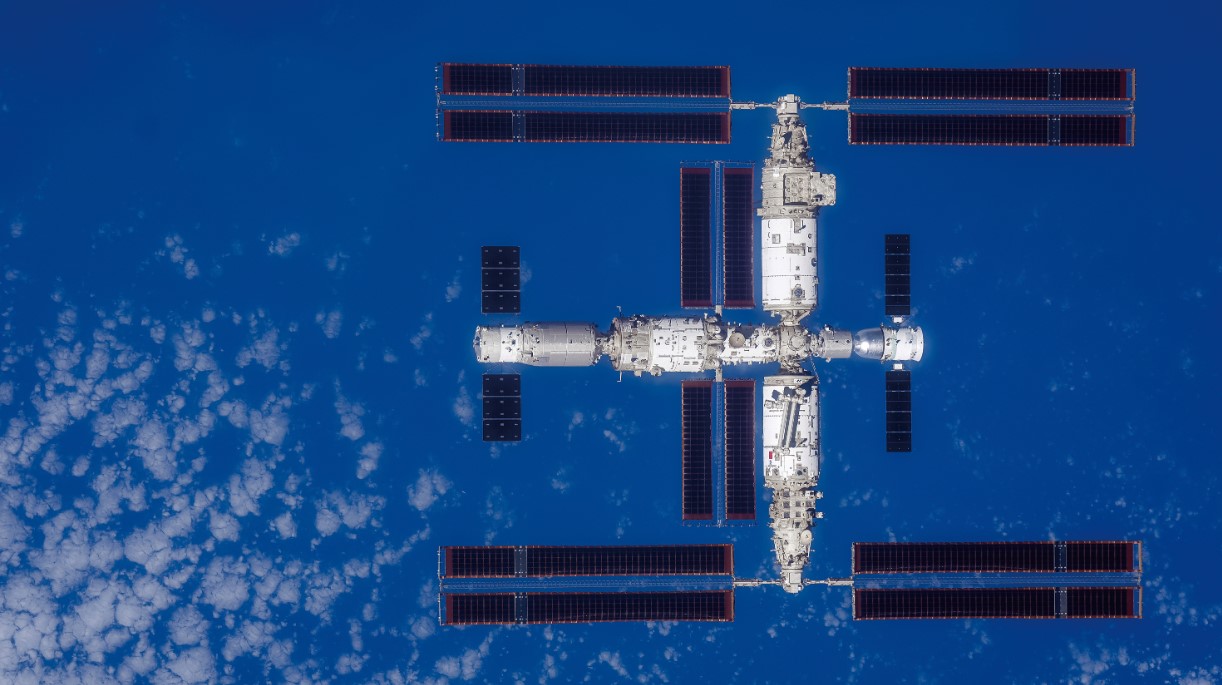Helsinki China’s Shenzhou 17 astronauts began their first extravehicular activity on Thursday to repair minor damage to solar panels at the Tiangong space station.
On Thursday, mission commanders Tang Hongbo and Tang Shengjie began an approximately 7.5-hour extravehicular activity (EVA), or spacewalk. According to the China Manned Space Engineering Office (CMSEO), the two re-entered Tiangong through the EVA hatch of the Wentian science module at 8:35 a.m. Eastern Time (1335 UTC) on December 21.
The Shenzhou 17 spacewalk mission included a repair test on one of the solar arrays in the Tianhe core module. The system was earlier found to have suffered minor damage from micrometeoroid impacts.
This successful experimental restoration can be seen as a big step for China as it aims to keep the Tiangong space station operational and permanently occupied for at least ten years.
Crew member Jiang Xinlin assisted in the operation inside Tiangong through the space station’s robotic arm. Tang Shengjie, 34, became the youngest Chinese astronaut to date to perform extravehicular activities.
Tang Hongbo completed his first spacewalk during the Shenzhou-12 mission in July 2021, visiting the Tianhe core module for the first time.
“This extravehicular activity is of great significance and extremely challenging. According to CCTV reports, Tang Hongbo said after the spacewalk that this was real on-orbit maintenance.
At that moment, I was immersed in the scene and deeply felt the vastness of the starry sky and the profound significance of infinite space exploration. “Tang Hongbo said.
A fascinating video released by CMSEO shows astronauts conducting a close inspection of solar panels with the assistance of the space station’s robotic arm.
Dong Nengli, deputy chief designer of China’s manned space program, said that this voyage has brought new challenges to the astronauts.
In past extravehicular activities, the main tasks of astronauts were installation and inspection. Dong told CCTV that Thursday’s round of extravehicular activities is what we call experimental services.
“This time the astronauts operated on one of the solar wings. It is flexible to some extent and very thin, which limits the operating space to some extent,” Dong said.
Dong added that the success of this extravehicular flight means that the team has mastered some extravehicular maintenance capabilities. This success has laid a solid foundation for us to ensure the safety and reliability of the space station in the future.
This work requires close coordination with the ground. Wang Yanlei, director of the Astronaut Selection and Training Department of the China Astronaut Research and Training Center, told reporters, “The accuracy of the repair work is very high, so the astronauts’ operational precision and proficiency in tool use are very high.” CCTV.
They must also confirm coordination between ground and space and verify location accuracy. Wang added.
The ever-evolving Tiangong Project
China completed the construction of Tiangong in October 2022 and is further formulating plans for its use.
CMSEO plans to launch an additional module to expand the orbital outpost. Yang Liwei, China’s first astronaut to fly into space, said that the first batch of international astronauts to visit Tiangong are being selected.
A report from the Air Forces China Aerospace Studies Institute (CASI) earlier this year noted that how CMSEO operates Tiangong, such its opening participation to civilian astronauts and nonstate-owned enterprise (SOE) companies, could probably change the global image of the Chinese space Program. CMSEO operates under the People’s Liberation Army (PLA) of China.
Earlier this year, Gui Haichao became the first Chinese civilian in space during the five-month Shenzhou 16 mission.
Commercial launch companies may also play a role in new low-cost cargo systems to supply Tiangong. Tomas Hrozensky, a senior fellow at the European Space Policy Institute (ESPI), told Space News earlier this year that the CMSEO cargo program is a clear sign that China is seeking to replicate the methods that made NASA such a major success. .
On December 21, parts of the Long March 7 rocket also arrived at the coastal Wenchang Space Port. The rocket will launch the Tianzhou-7 cargo mission to Tiangong in mid-January.
related
#Shenzhou #astronauts #perform #spacewalk #repair #solar #array
Image Source : spacenews.com
